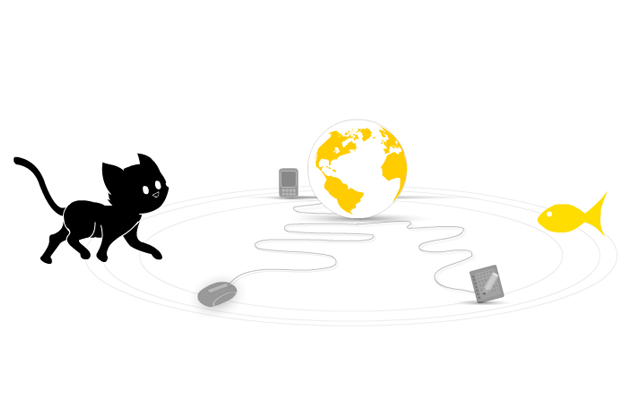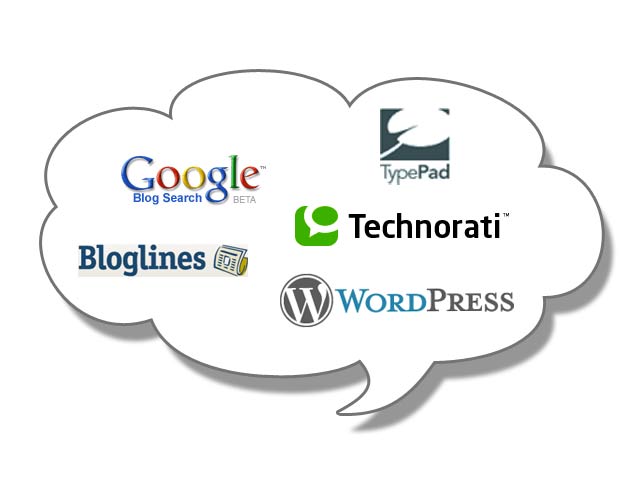Online Consumer Behaviour – Content Planning for Different Digital Touch Points
Consumers behave differently at different digital touch points. The reason why they visit a brand website, and why they follow a brand on twitter can be very different. Planning content by clearly understanding the visitor’s mindset at different digital touch points can help to establish a meaningful connect with them and fostering a long term relationship. Here’s a quick guide to the Internet user’s digital media psyche:

The Website Visitor
Is proactively seeking info in your brand domain
- This visitor has landed on the website primarily when searching for content or seeing a relevant recommendation or post that links to your website, or has come to the website knowing the url (may be a repeat visitor).
- Is seeking immediate answers if the visitor has come from a search engine, or is curious to know more about you if the visit is not via a search engine. Repeat visitors come for a specific purpose of information seeking or engagement (such as dabbling with an online app or engaging in a forum).
- Can engage further in the website if her query is addressed and there is relevant and/or engaging content.

The Facebook Visitor
It Is The Brand That Is proactively reaching out to this user
- The consumers here are hanging out to check latest updates from friends, family and acquaintances.
- Chances upon brand updates, comments and likes if relevant, shares when compelling. Sharing happens when the content is Fun/ Informative / Relevant to immediate circle
- Clicks to know more, visits the URL when relevancy or engagement is meaningful and there is a ‘need’ for such further engagement

The Blog Reader
Is proactively seeking an informed opinion of another consumer or expert
- Reads up a post when she is searching for information, and/or has subscribed to a favorite blogger’s feeds
- Prefers a second opinion and usually would scan 2-3 blogs before deciding whose opinion is best suited.
- Would usually scan blog comments before deciding / making the final choice.
- Is usually someone to whom word-of-mouth or recommendations counts the most.

The Forum Subscriber
This user wants mass opinion, what peers have to say.
- Usually visits a forum via search, may frequent thereafter
- Possibly wants to ask a question, get opinions.
- Reads discussions by others
- May get answers or make an opinion/choice even without posting a query

The Twitter Follower
Is proactively following to be updated in the subject
- Twitter has many inactive, and equal number of hyper active tweeple and the occassional users.
- There are some who are on twitter with a specific agenda: Save time by following people whose tweets give quick relevant updated information
- Tweeple usually follow more than one area of interest
- Reaching them is not always easy due to the rapid updates in tweets
However, visibility on twitter can be enhanced by following trending topics, being crisp and juicy, getting the right people to follow you with relevant hashtags, and targeting the right follows.

The LinkedIn User
This consumer is seeking ONLY career or business advancement
- The LinkedIn user is very specifically looking at making a career advancement, getting deals, networking, improving visibility
- Will join groups that will give relevant networking opportunities or content that will better their career in some way.

The Youtube Visitor
Wants entertainment, visual explanations, demos, how to’s
- Users watching videos online are likely to have opted for video content when searching for related information
- Or has been forwarded the link
- Or is specifically seeking video content directly on Youtube for visual relay of similar information that has been read, unless it is entertainment related.

The Search User
Proactively seeking your domain information
- Is specifically seeking information
- Tries out 2-3 links or more on first search results
- Finds different combinations of keywords to refine searches till she gets a satisfactory answer
- Is likely to spend more time searching for the right information, than done on looking up that information!
- Is also likely to explore related information and content

Search Users On Mobile
Is in a hurry!
The context of searching on the mobile phone is usually on the go, urgent and also a matter of convenience.
Mobile & Tablet Users
On the move, wants quick info, utility tools & engaging apps
- More savvy users, and the ones with smart phones use the mobile phone for everything: FB, Twitter, Search, Email, etc.
- Such users also install and play around with applications that are useful, fun or relevant.
- The tablet owners, smaller in number, but a significant group and an influential audience does all of the above on tablets.
If you plan to use multiple channels on the web to disseminate your brand information, then customizing or fine tuning your content by understanding the customer mindset in each of these channels can help in the forming of long term engagement and loyalty, as well as recall. And remember less is more!

Really good information. Going through your blog anyone can improve their website and even he can help the visitor to find the related what he searching?. Thanks for your info.
Thanks for appreciating Azhar, makes blogging worth the while 🙂
Great Information Chaaya! These ideas will be very helpful to businesses. Thank you very much for sharing this.